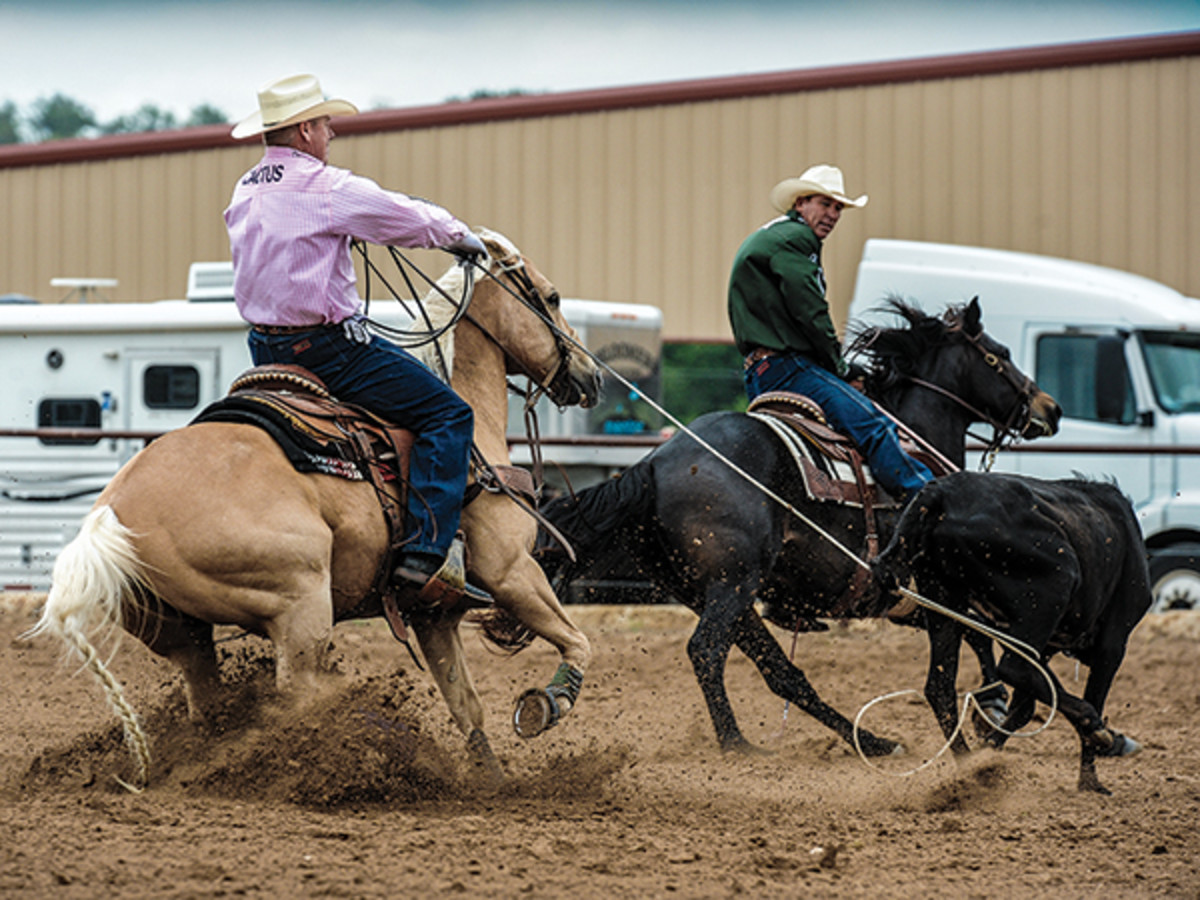After teaching team roping schools and competing in rodeo for so many years, I’ve heard a lot of different reasons for why people prefer long or short spokes in their loop. Each team roper figures out the spoke length that allows him to feel the tip of his or her rope best while roping. I think it’s important for ropers to learn to feel the tip of your rope, because in order to be successful as a header or a heeler in the rodeo or roping arena, you have to be able to feel where the loop parts are in order to be accurate with the delivery of the loop.

I started swinging a rope when I was around 3 years old. I roped our dog, the chairs, the couch and everything else I could think of. Eventually, when I was 5 or 6, I started roping little dummies I made. We had a cast-iron steer-head boot jack, and I tied it to the top of the dinner-table chair. I put a pillow over the back of the chair, then tied the boot-jack head to the pillow. I had little make-believe ropings all by myself on that thing. I’d run across the dining room and into the living room, rope the horns and take the rope off. Then I’d lope like a steer on the way back across the room, and heel myself. I’d make literally a hundred runs a night, every night. I think they call that loving to rope, which is something that’s never changed for me.
By handling a rope so much as a little kid I never had any problem feeling my loop parts. I’ve just always known where they were. So I learned naturally to know where every part of my rope is at any part of the rotation of my swing.
It takes a lot of hours of handling a rope to be able to develop a feel for where the tip, top and bottom of the loop are at all times when you’re swinging it.
None of the top guys have any problem feeling the tip of their ropes. They’ve all gone through some type of process, whether they realize it or not, to where the loop becomes an extension of their fingers and hand, and they can place the loop anywhere they want. That kind of accuracy comes through feel, and you develop that by spending a lot of time with a rope in your hand.
Kids learn all of this relatively easily, because they start playing with little bitty play ropes when they’re young. They learn to develop that feel early on, without even thinking anything of it. I had all that figured out before I ever picked up a big, heavy heel rope.
If you don’t start out as a little kid who doesn’t even have to think about it, you look at the loop as a flimsy, unstable object that you have to be able to feel all the way around the rotation of your swing in order to form a top, bottom and tip into an open object in your hand that you can catch something with. If you can control the shape of your loop, you can use it like any other object.
I use the analogy of a toothbrush at some of my schools. You can brush your teeth in the dark, because you have a formed object in your hands that you’re familiar with. You know how long it is and where the bristles are, so it’s easy to use as a tool. You need to be that familiar with your loop, even though it’s flimsy. That way, you can put it right where you want it.
You need to form your loop so it has a straight side on the bottom, a straight side on the top and a tip on the end, so you can feel that object and use it to catch the steer. Then your brain can visualize where the parts are and where they need to go. If you have that feel, you can place that object-your loop-in the spot where it’s supposed to go.
One way to feel the length of the loop and where the tip is is to choose an object-the top of a dummy or a dirt clod on the ground if you’re on foot-to where when you swing, you graze that object with your tip. If you’re too short or long with your depth perception and where that tip is, it will affect the accuracy of your loop. So
doing that allows you to make adjustments and get it right.
When you’re practicing your swing, if you bring your tip down in front of you enough to where you can see the tip, that can also be helpful in getting that awareness for where the tip of your rope is.
If you don’t develop the ability to feel the loop parts-where the top, tip and bottom are-it really limits your ability to be accurate and consistent with the delivery of your loops. Things have to be pretty precise to throw a good heel loop every time, so this is important.
If you’re a beginner roper, or even someone who’s roped awhile, and you still have trouble feeling your loop parts in your swing, you might try things that work for other people and watch other ropers. Try different lays of ropes and go more limber or harder. You might also try changing your spoke length. Experiment in all areas to try to develop that feel for your loop and its parts.










